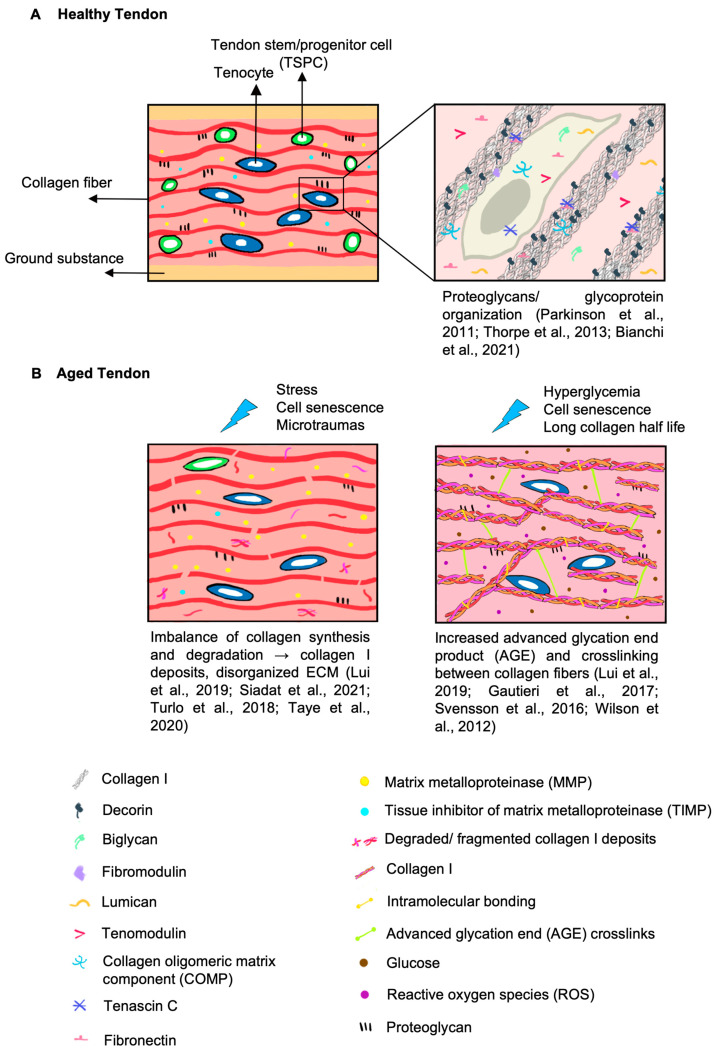Figure 1.
Tendon ECM compositional and structural changes under healthy and aged states. Upper right: [50,51,52] Left: [3,40,53,54] Right: [3,55,56,57]. (A) Cellular and extracellular components in healthy tendons. Collagen-secreting tenocytes and their progenitor cells, TSPCs, are located between collagen fibers and crucial for maintaining their anisotropic arrangement and tensile strength [58,59]. Collagen fibers are organized in a parallel and homogenous manner [52,58] and interspersed within other ECM components [52,58]. Matrix metalloproteinase (MMPs) and tissue inhibitor of metalloproteinase (TIMPs) coordinate with PGs to modulate collagen fibrillogenesis, cell/growth factor interactions, matrix assembly and fibril sliding during musculoskeletal movement [49,60,61]. Adapted from [50,52]. (B) Age-related changes in tendon cellular and ECM components. TSPC or tenocyte dysfunctionality [47,62] as well as an increased MMP/TIMP ratio [3] contribute to collagen fragmentation and results in a disorganized ECM [53,63]. In addition to intramolecular bonding (in yellow) between the collagen triple helix, intermolecular bonding or advanced glycation end product (AGE) related crosslinks (in green) increase during aging [56]. AGE formation can be further accelerated by hyperglycemia (in brown) and increased levels of reactive oxygen species (ROS) (in purple) (induced by cell senescence) [64,65]. Alterations of PGs and GPs in aging tendons are inconclusive [3,51,53,66,67]. Adapted from [52,57].

